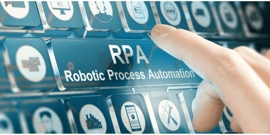BP3 GLOBAL-SERVICE
Blueworks Live Best Practices
Blueworks Live Best Practices for Enterprise Process Excellence
In enterprise transformation, process clarity is power. IBM Blueworks Live (BWL) is a collaborative, cloud-based tool designed to help organizations document, analyze, and improve processes. But as many automation leaders know, a tool alone doesn’t guarantee success. To unlock real value from Blueworks Live, you need an adoption strategy grounded in best practices that bridge technology, people, and process.
1. Start with Strategy, Not Stencils
Before opening Blueworks Live, align on the “why” behind your process mapping.
- Tie every effort to a business objective—whether that’s reducing compliance risk, speeding time-to-market, or improving customer experience.
- Use your organization’s automation roadmap to guide which processes to map first. Mapping without strategic alignment risks wasted effort and low ROI.
2. Engage the Right Stakeholders Early
Process models are only as accurate as the knowledge behind them.
- Include both process owners and frontline employees in discovery sessions to ensure a complete picture.
- Use facilitated workshops to break down silos, uncover undocumented steps, and build cross-departmental buy-in.
BP3’s change enablement experience shows that early inclusion reduces resistance later.
3. Focus on the User Experience
One of the main reasons process mapping tools fail to gain traction is poor usability.
- Keep diagrams simple and readable—avoid overcomplicating with unnecessary detail in early drafts.
- Add plain-language descriptions and annotations to make maps accessible to non-technical audiences.
UX-led process design increases adoption and helps teams actually use the maps to drive change.
4. Standardize Naming and Structure
Consistency is critical for scaling process documentation across teams.
- Define a common naming convention for activities, roles, and artifacts.
- Use standard templates for different process types to ensure uniformity.
A Center of Excellence (CoE) can act as a governance body to maintain these standards.
5. Integrate with Broader Automation Efforts
Blueworks Live should be more than a static diagramming tool.
- Link process models to automation opportunities identified in RPA, BPM, or AI orchestration initiatives.
- Export process data into analytics dashboards for real-time performance tracking and ROI measurement.
This keeps your process library alive and directly connected to business outcomes.
6. Iterate and Improve Continuously
A process map is a living document, not a one-time deliverable.
- Schedule regular reviews to capture changes in regulations, technology, or workflows.
- Encourage a culture of feedback where teams suggest improvements directly in the tool.
The Payoff:
When implemented with these best practices, Blueworks Live becomes more than just a mapping tool—it becomes a strategic enabler. You gain process visibility, accelerate automation readiness, and foster collaboration between business and IT. Most importantly, you create a foundation for measurable ROI, supported by governance and designed for scale.
BP3’s experience shows that combining the right tool with the right approach leads to faster adoption, stronger alignment, and a clearer path from vision to value.


